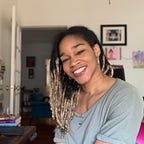Autistic Women and the Scourge of the Manic Pixie Dream Girl
Say it with me, guys: manic pixie dream girls aren’t real.
It is time, once again, to talk about the manic pixie dream girl (MPDG) — the Hollywood trope of a blue-haired young woman with zero regard for social mores, a free spirit who sets her inner life aside as she gleefully encourages a sullen main character to stop sulking, chase his dreams, and face life head-on. Coined and popularized in the early 2000s alongside greatest hits such as Scott Pilgrim’s Ramona Flowers or Elizabethtown’s Claire Colburn, this stock character is almost magical in her ability to provide important life lessons for the male lead while requiring no support, backstory, or character development of her own. Sometimes she’s bubbly, or edgy, or both, but unchangingly she wants nothing more than to be some guy’s source of motivation, whimsy, and love, until her role is no longer needed. And then, poof! She disappears, allowing him to do his thing without distractions.
The MPDG is a male power fantasy through and through, and there’s nothing wrong with that! So long as you can tell the difference between fantasy and reality, which many fail to do.
I am an autistic woman. More often than not, men with “main character” syndrome find their real-life MPDGs in the form of autistic…
